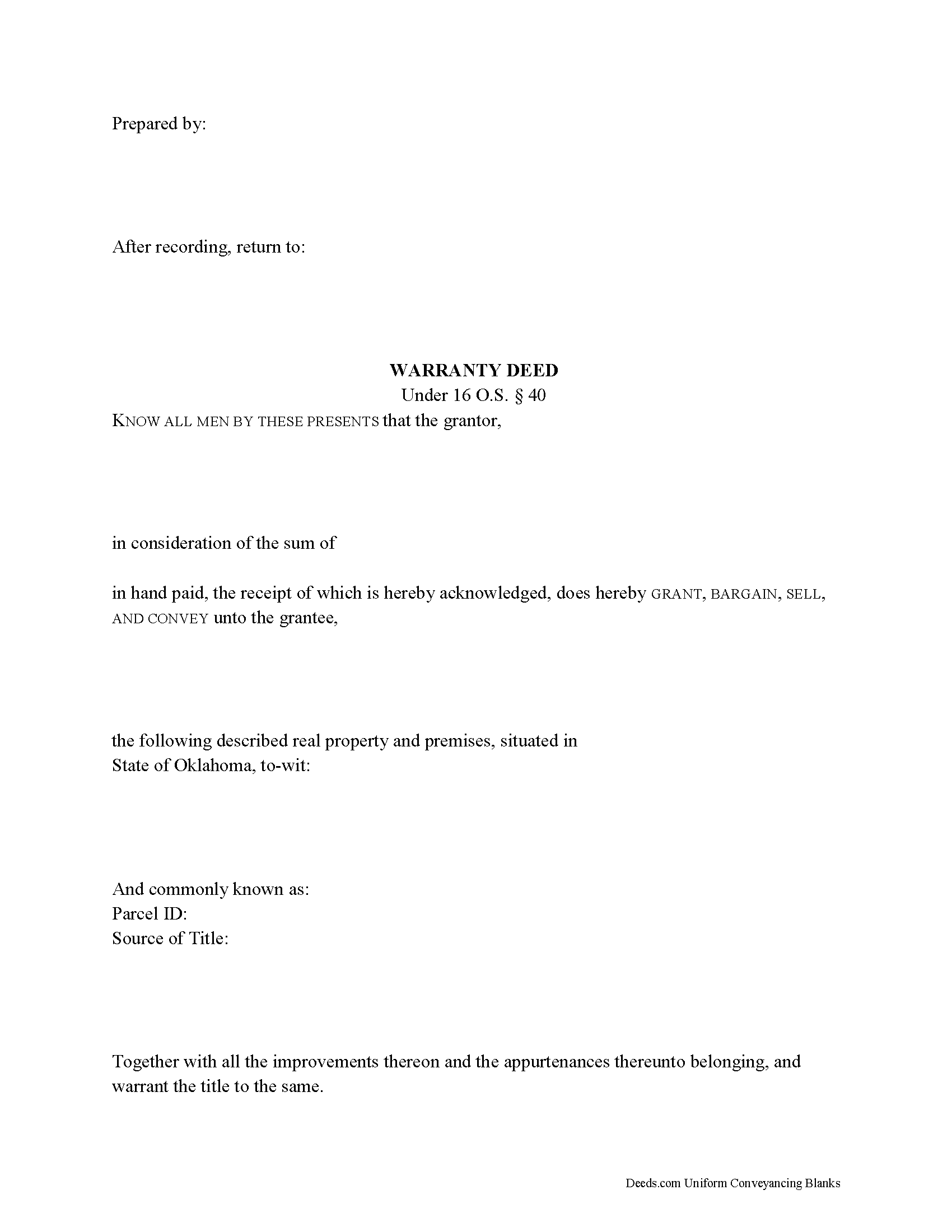Download Oklahoma Warranty Deed Legal Forms

Oklahoma Warranty Deed Overview

In Oklahoma, title to real property can be transferred from one party to another by executing a warranty deed. Warranty deeds are statutory in Oklahoma under 16 O.S. Section 40, and they convey real property in fee simple with the most assurance of title.
In its statutory form, a warranty deed contains covenants that the grantor holds title to the property and has good right to convey it; that the property is free from encumbrances (with the exception of any noted in the deed); and that the grantor will defend the title against all lawful claims (16 O.S. Section 19). This warranty of title is greater than that of a limited or special warranty deed, which guarantees the title only against claims that arose during the time the grantor held title to the property, or a quitclaim deed, which offers no protections at all for the grantee.
A lawful warranty deed includes the grantor's full name, mailing address, and marital status; the consideration paid for the transfer; and the grantee's full name, mailing address, marital status, and vesting. Vesting describes how the grantee holds title to the property. Generally, real property is owned in either sole ownership or in co-ownership. For Oklahoma residential property, the primary methods for holding title are tenancy in common, joint tenancy, and tenancy by entirety. A conveyance of real estate to two or more persons creates a tenancy in common, unless otherwise specified. Only spouses can declare a tenancy by entirety, and the choice must be explicitly stated (60 O.S. Section 74).
As with any conveyance of realty, a warranty deed requires a complete legal description of the parcel. The legal description must provide the information necessary for indexing as required by Section 287 and 291 of Title 19 O.S. (addition, block & lot, section, township & range, and metes & bounds if necessary for the location). Verify the type of description required with the local county clerk's office. Recite the prior deed reference to maintain a clear chain of title, and detail any restrictions associated with the property.
A warranty deed must meet statutory and county requirements for formatting recorded instruments. Sign the deed in the presence of a notary public and record at the clerk's office in the county where the property is located for a valid transfer. Contact the same office to confirm accepted forms of payment. When submitting a deed that is exempt from the Documentary Stamp Tax for recording, cite the exemption claimed on the face of the deed. See 68 O.S. Section 3202 for a list of exemptions. For any questions regarding a transfer of property affecting Indian land, refer to the Bureau of Indian Affairs and contact a lawyer.
This article is provided for informational purposes only and is not a substitute for legal advice. Consult an attorney with questions about warranty deeds, or for any other issues related to the transfer of real property in Oklahoma.
(Oklahoma WD Package includes form, guidelines, and completed example)